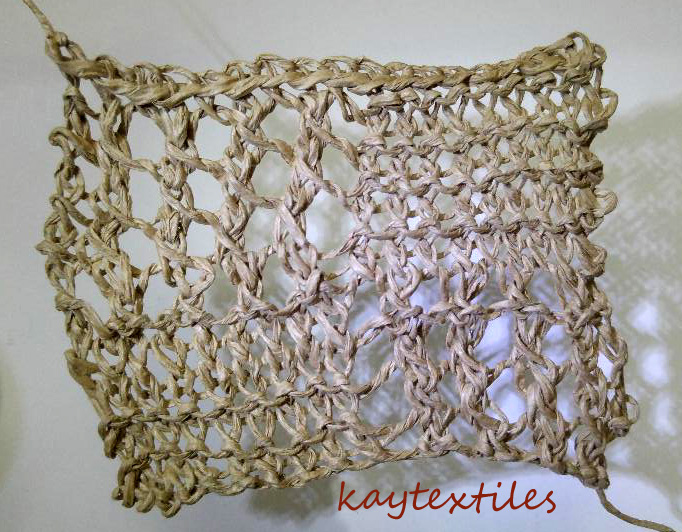Development Work From Research
1. Braid Stitches as a Printing Block
2. Plaited and Woven Braids and Knots
Stitch samples were made using garden twine, paper twine and string, on rigid plastic and rug canvas (2-1 to 2-4).
I took this opportunity to experiment using Heat'n'Form (2-6 to 2-10). Rigid plastic was used to support the stitches, in some cases, as I love the extra textural elements on the print from the ink printed from the plastic. Similarly, the rug canvas added additional interest. To obtain the most from the printing process I didn't use a rigid block to support the stitched samples, but supported them on hand held rounds of cords attached to the back. I could, therefore, manipulate the stitches and their support during the printing process to introduce as much ink/interest as possible on the print.
The chunky braids were made using Nutscene Polished Flax Garden Twine 2mm and paper twine.
2-5 Braids including:
- square/flat knot
- half hitch knot
- single chain stitch
- five strand plaited
- half square knot/mermaids' beads

From these I made relief prints and took rubbings, keeping to my red, white, black, silver and gold theme using:
- Daler Rowney Interference Colour Medium Shimmering Copper 712
- Golden Fluid Acrylic Iridescent Silver (fine)
- Golden Fluid Acrylic Iridescent Pearl (fine)
- Golden Fluid Acrylic Red Oxide
- Markal Paintstik red and white
- PlayArt metallics
On the above prints I particularly liked the contrast between the relief print obtained from the simple stitch together with the contrasting negative image from the Heat'n'Form.
The rubbing were less successful than the prints. Rubbings on tissue produced holes no matter how careful I was and the rubbings were poorly defined. In a way this was overcome with the Heat'n'Form which took the characteristics of the braids and stitches well, though producing a negative image. (The turquoise iridescent paintstik was used for rubbing as no other was available in my colour scheme but as it wasn't particularly successful I didn't pursue this.)
2-30 Background - relief printed stitches and braids on black sketchbook paper
Braids from left to right:
- five strand flat
- four strand flat
- Josephine knot/Carrick bend worked openly
- four strand
- four strand braid over double strand
- four strand braid over double strand
- half square knot/mermaids' beads
- four strand rounded
- horizontal half-hitch/buttonhole
- horizontal half-hitch/buttonhole
- three stranded on central core
- needleweaving
- twining
- Genoese bar (single)
- square/flat knot
2-31 Background - relief printed stitches on black tissue
Braids from left to right:
- rounded plait
- weaving over stationary strand
- decorated wrapped braid
- single chain - 2 cords
- square knot used to form net type fabric
- 4 strand square knot braid
- half hitch/buttonhole knot
- tatted bar
- four strands woven to point on each side
- split ply braid
- split ply braid
Bibliography
Braiding and Knotting Techniques and Projects by Constantine A Belash
Making Plaits and Braids by June Barker
Macramé A Comprehensive Guide Heidy Willsmore

























































